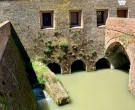> Home > What to visit > Archaeological Sites

Mulino Fortificato Monteroni d'Arbia
ARCHAEOLOGICAL SITES
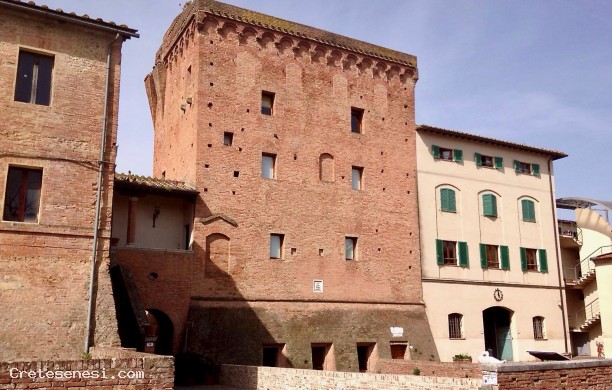
PHONE NUMBERS AND TIMES
Mulino Fortificato
Business card (vCard)
In the town of Monteroni d'Arbia a beautiful fortified mill dating back to the first half of the 14th century is still in a good state of conservation. The imposing bulk of the brick building is enough to testify the importance it has historically played. Although it is a rare example of a medieval fortified milling structure in Tuscany, few know its history.
The mill was built between 1323 and 1325 on the basis of a commercial agreement between the Sienese hospital of Santa Maria della Scala and the Mignanelli family. In two documents preserved in the State Archives of Siena (1 April and 18 April 1323), the definitive agreement is ratified between the Hospital of Siena and the children of Bando Mignanelli and it is established that all the costs of land purchase, of material and repairs will be divided halfway between the contractors, as well as the proceeds of the milling. The two parties undertake to advance the same sum of money and to provide half of the building materials: 100 canisters of mortar, 50,000 bricks, as well as half of the timber, hardware and labor.
The Mignanellis also undertake not to build, for a period of twenty years, other mills between the Isle of Arbia and Cuna and to demolish the mill in the "Padule" place that its slat, so as not to be an obstacle to new facility as soon as it starts to work.
At the end of 1324, when the works were completed and a few weeks before the mill came into operation, the hospital acquired all the rights claimed by the Mignanellis for 1300 gold florins. At the same time, the Mignanellis signed the commitment to tear down their mill within ten days, which was about a hundred meters from the new one and was also in the "Padule" area.
The grandiose works were entrusted to the Great Master Tura Ridolfi, assisted by some foremen of the caliber of Cola Ugolini, Cione Lamberti and Guidone Paci. Between 1345 and 1347, among the "outputs" of the accounting books, we find that there were huge expenses for the reconstruction of the millstone of the Monteroni mill and that in 1375 this mill, like that of Buonconvento, had been damaged by the Ventura companies .
In 1379, the chapter of Santa Maria della Scala, headed by the Rector of the time Bartolomeo Tucci, decided to fortify the mill and the structures adjacent to it.
The imposing building continues to appear even afterwards among the properties of the nearby grancia di Cuna, as evidenced by some documents of the sixteenth century, including one from 1590 which shows the estimate of the rent, amounting to 8 lire. From this and from another previous document (1552) we know that the mill worked with two millstones, despite having four, probably due to the decrease in the flow of the waters that fed the mill.
Recent studies have shown how, in the period of greatest activity, the mill could produce up to half a ton of flour per day.
The mill, which represented the fundamental hub for the supply of wheat and flour for the entire area, therefore owes the strong interest of the Sienese institutions: in medieval and modern times, at least as long as the Sienese hospital remains the owner of the accommodation and milling facilities in the area, that is, until 1786.
It is worth remembering that the Monteroni mill was one of the largest and most "voracious": it worked "in four millstones", that is, with four milling structures: and in the years of more intense activity, those preceding the great plague of 1348, the grain conferred at the mill it exceeded eight tons.
Finally, the milling activity was associated, in contiguous rooms, with the fulling of fabrics: washing, dyeing and gualcheria for their felting.
STAY NEARBY
CAGGIOLE DI RADI
MONTERONI D'ARBIA
The farmhouse is situated on a hill from which you can enjoy a beautiful view of Siena. It...SAN FABIANO
MONTERONI D'ARBIA
You come here as guests and you leave again as friends. Filippo and Rachele Fiorentini inv...VILLA RANDAGIA
MONTERONI D'ARBIA
...DINING & ENTERTAINMENT NEARBY
SuperCinema
MONTERONI D'ARBIA
Opened Friday, June 11, 2010 the Supercinema is located in Via San Giusto in a local purch...Bar Le More
MONTERONI D'ARBIA
Il Bar LE MORE si trova lungo la via Cassia in località More di Cuna. Mauro Chel...La Grotta
MONTERONI D'ARBIA
...



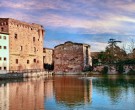
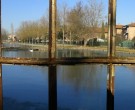
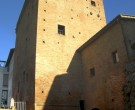
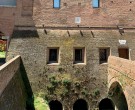
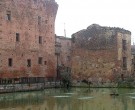
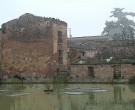
.jpeg)
